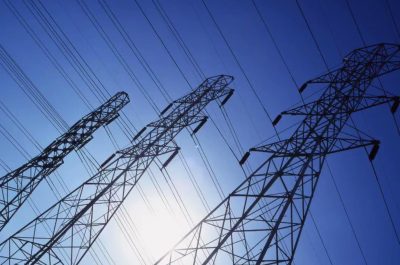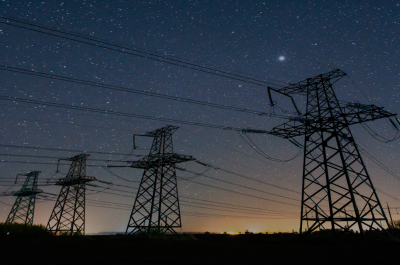Ding Ding!: The Great Energy Challenge
In your corners, gents
In the blue corner for Team Liberal and reigning champion stands Angus Taylor. Taylor’s energy credentials are well known. Before entering Parliament, he was a Director at Port Jackson Partners, where he was a strategy and business advisor on the resources, agriculture, energy and infrastructure sectors. Often spied training for a casual triathlon or two around his rural seat of Hume, it looks like Taylor has the stamina for more than a couple of rounds.
In the red corner, is our challenger Chris Bowen. Already a heavy weight champion for Team Labor, Bowen has a wealth of political experience. Serving as Treasurer in the previous Parliament and before that as Minister for Science and Research, Bowen knows how to balance the books and the importance of innovation. Arriving in a Tesla, Bowen has a vested interest in ensuring our grid can handle the fight.
A man with a plan
Going toe-to-toe, both sides are armed with strong plans to outline their vision for the future of Australia’s energy sector.
Both claim their plans will reduce emissions, boost renewable energy, create jobs, kick start manufacturing and reduce power bills.
The Coalition comes out swinging with a technology not taxes combo for lowering emissions and keeping energy costs low. Adding to the already sizeable dollars, the 2022- 2023 budget delivered another $1.3 billion of new investment. The budget builds on previous strategies including the Long-Term Emissions Reduction Plan, the Technology Investment Roadmap and Low Emissions Technology Statement, National Hydrogen Strategy and Future Fuels and Vehicles Strategy.
Labor’s Powering Australia manifesto is impressive. Fully costed, it seeks to close the gap between federal and state governments and the business community and hopes to spur $76 billion worth of investment in renewable power. The plan looks to increase the share of renewables in the National Electricity Market (NEM) to 82 per cent by 2030.
Show me the money
The Coalition’s commitment of $1.3 billion for new investment to maintain energy security aims to keep downward pressure on energy prices while reducing emissions.
It argues these measures will further support affordable, reliable and secure energy and help Australia reach its target for net zero emissions by 2050, without imposing new taxes or financial burdens on households, businesses or industry.
The Coalition has announced $148.6 million to support more investment in affordable and reliable power, including the development of community microgrid projects in regional and rural Australia and funds to accelerate the transition to net zero through hydrogen.
Under Labor’s Powering Australia sits Labor’s $20 billion Rewiring the Nation plan. An elected Labor government would upgrade the electricity grid so it can handle more renewable power and work with the private sector to create thousands of jobs across the regions and deliver cheaper, more reliable electricity to homes and businesses.
Labor also plans to install 400 community batteries across Australia with an investment of $200 million to maximise the benefits of Australia’s rooftop solar transformation.
The batteries will support the grid and provide shared storage for up to 100,000 households.
Power bills
Angus Taylor claims that wholesale electricity costs for households are now at their lowest levels in eight years. In the last two years alone, the ACCC has found power costs have dropped eight per cent for households – that’s a $128 a year drop. For small businesses, the average cost has fallen by 10 per cent over the past two years, and for large business customers, costs have fallen by 12 per cent over the same period.
Labor is backing the sun and says by taking advantage of inexpensive solar energy that can be stored and used at peak time it will bring down household power bills by $275 in 2025 and $378 in 2030.
Added to this is a solution for apartment owners, renters and those who simply can’t afford the outlay for solar panels in the form of solar banks. Labor has allocated $100 million for 85 solar banks across the country – providing cheaper electricity for more than 25,000 households that are locked out of rooftop solar.
Electric vehicles
Electric Vehicles are the new up-and-comer in the ring. As range increases and costs come down, they are really packing a punch. Both corners are having to learn to live with the new kid on the block.
The Coalition has the Future Fuels and Vehicles Strategy in its back pocket. It sets out how the Australian Government will support a technology-led approach to reducing emissions in the transport sector. The Coalition is placing greater emphasis on charging infrastructure where and when it is needed rather than direct tax incentives to encourage EV ownership.
Labor is fighting from the front foot. An elected Albanese government will introduce an electric car discount to make electric vehicles cheaper by removing taxes from low-emissions vehicles. Import tariffs and the Fringe Benefits Tax will be removed from models below the luxury car tax threshold.
Labor isn’t about to throw everything out of the ring just yet. It will retain existing Commonwealth commitments like roads funding to encourage EV charging infrastructure.
Transmission
You can’t have a one-man boxing match and you can’t have transition without transmission.
The Federal Government has invested a sizeable amount in major electricity transmission projects in NSW, SA, Victoria and Tasmania. And Labor isn’t about to take any of them off the table.
Humelink and QNI Minor are well on the way to completion and the Federal Government has committed up to $250 million to accelerate Marinus Link, Project Energy Connect and VNI West interconnectors through the Interconnector Support Program.
Where the difference will come is in the form of Labor’s $20 billion Rewiring the Nation Fund to provide low-cost finance for new transmission projects and in proposed changes to the Regulatory investment test for Transmission (RIT-T).
We don’t mind a bit of sparring every now and then and a gentlemanly war of words erupted at the recent Energy Networks Australia conference with both contenders delivering straight from the shoulder.
Bowen announced at the conference that an elected Labor government would work to improve the RIT-T process. Firstly, tackling the issue for social licence, increasing engagement with affected landowners and that includes some form of compensation mechanism.
Secondly, the RIT-T should focus not only on cost but should also consider the community value and benefits of the project. Thirdly, ensuring the RIT-T process is no longer than is necessary, and that includes potentially circumnavigating the process all together.
Energy Minister Angus Taylor also addressed the crowd at EN2022. Taylor warned ‘we need to be careful about transmission investments because these are baked into bills for decades. Households and businesses cannot afford a repeat of the doubling of electricity costs they saw under Labor driven by the carbon tax and gold-plating of our poles and wires.’
Both contenders will need to find the balance between timely investment and over investment. This will be the key to ensuring grid stability and the transition to a net zero future without passing on huge costs to customers.
The Final Round
The final round is approaching with the Federal election about six weeks away and neither contestant is pulling any punches. Regardless of whose hand the referee holds up at closing of the polls, they have their work cut out for them.
The energy sector is moving and innovating quickly. New grid infrastructure is essential if we are to deliver a renewable energy grid that is secure, reliable and keep bill costs under control.
Energy storage and diversity of energy supply is more crucial than ever as system operators deal with grid stability and what happens in the event of a renewables drought if the sun doesn’t shine or the wind doesn’t blow.
Electric vehicles, solar panels and large and small scale batteries are only going to increase in number. The grid needs to be well prepared and invested in to allow for the challenges and opportunities that provides.
May the best man win.


